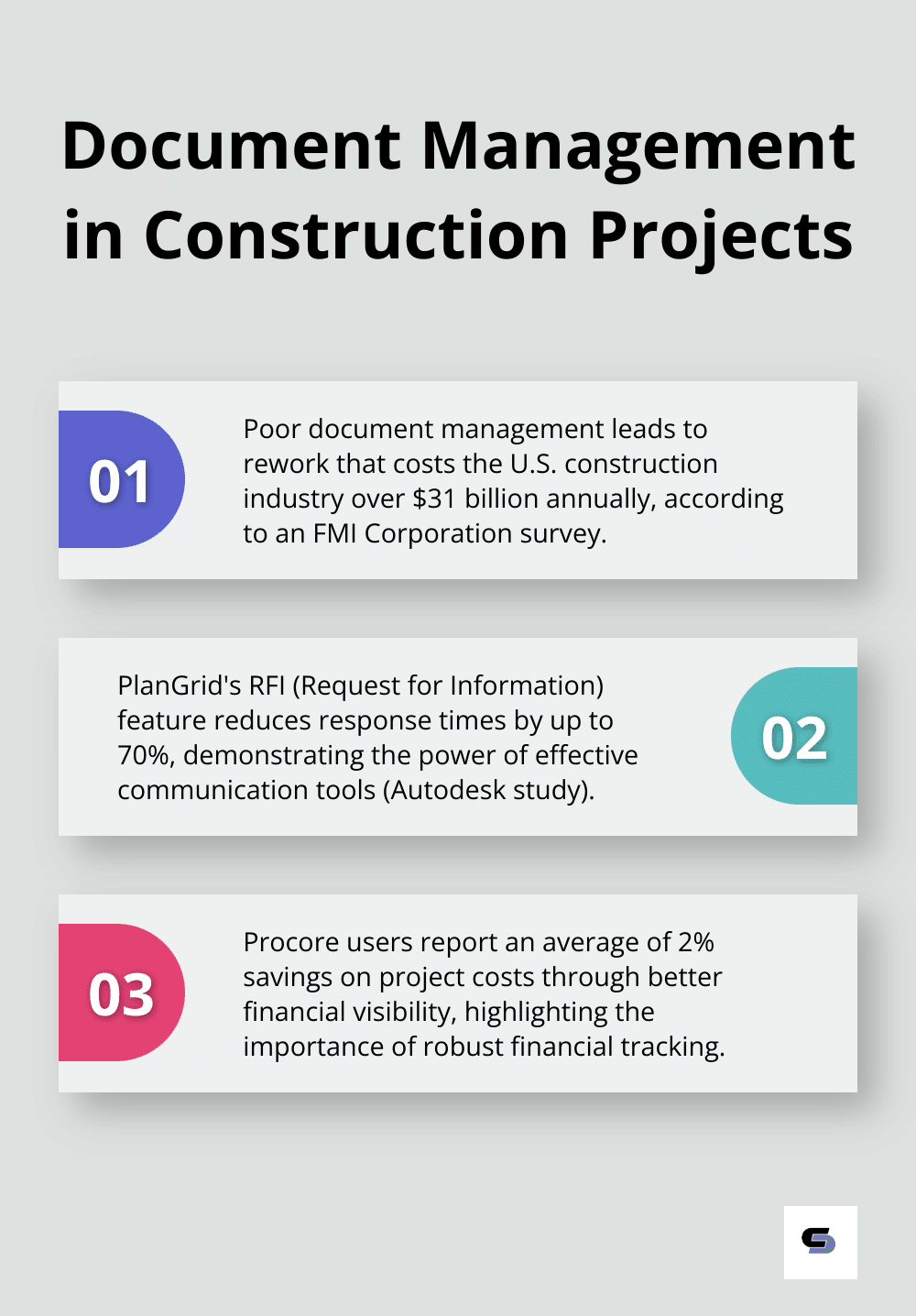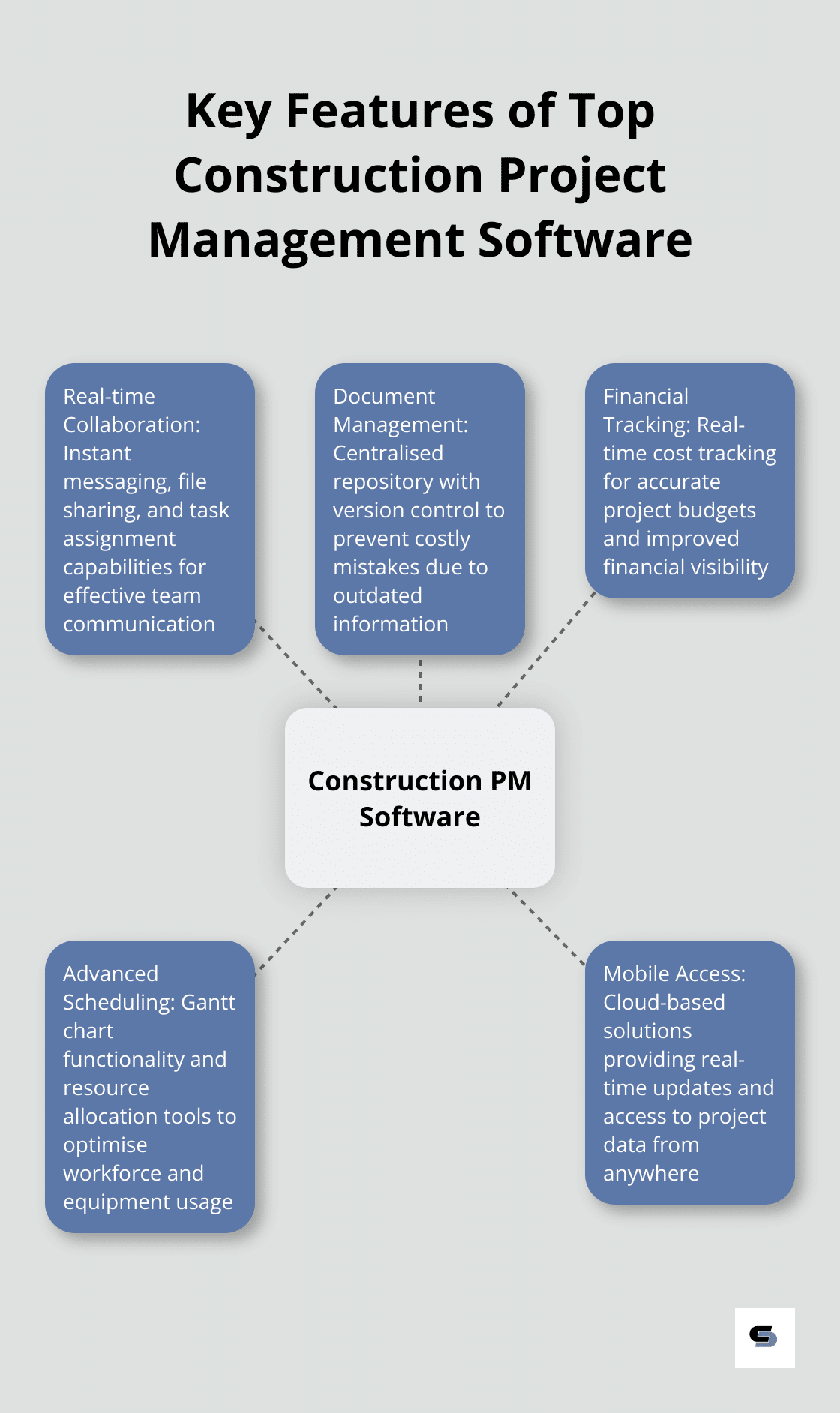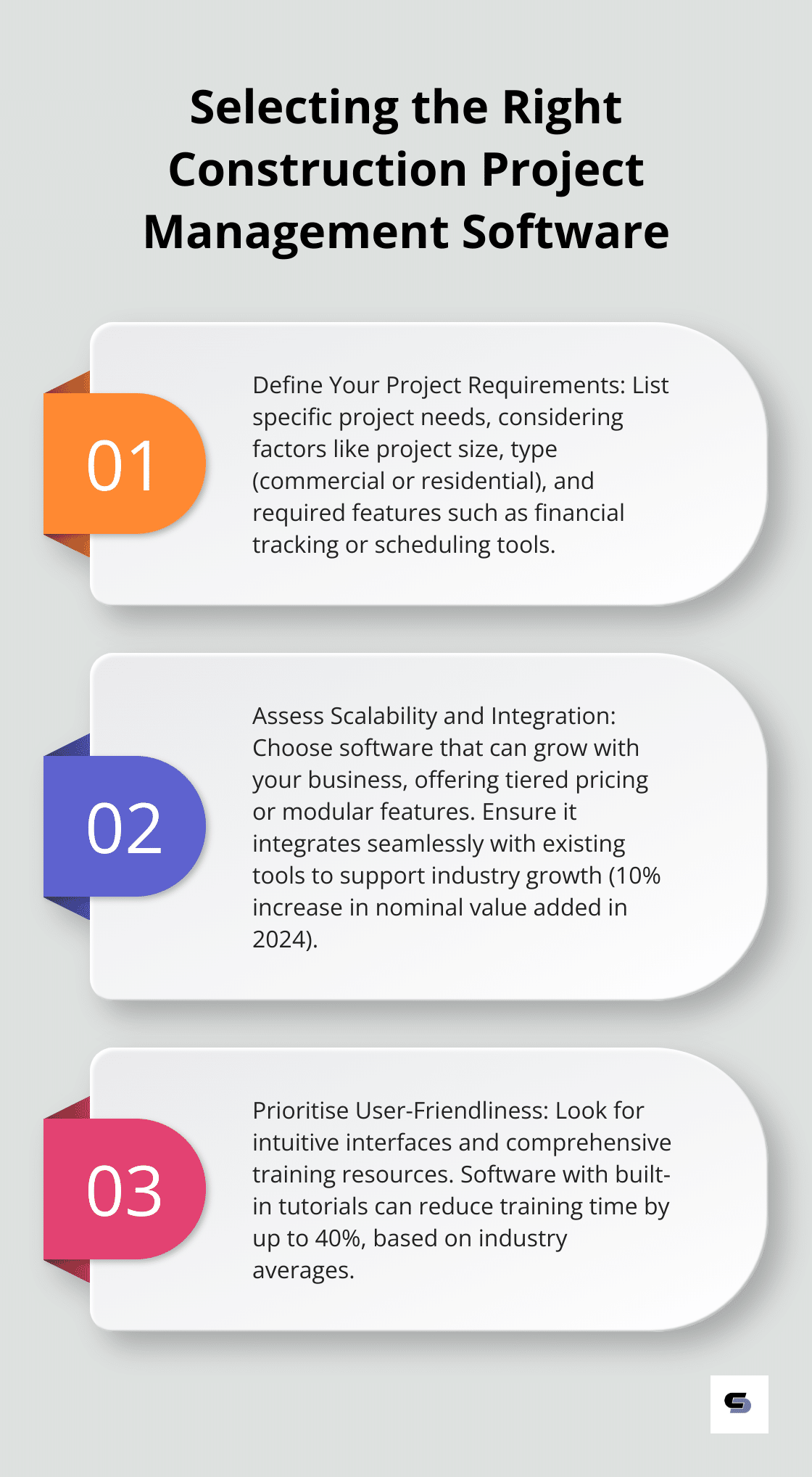How to Choose the Best Construction Project Management Software
Choosing the right construction project management software can make or break your projects. At Cameron Construction, we’ve seen firsthand how the best construction project management software streamlines operations and boosts productivity.
With countless options available, finding the perfect fit for your business can be overwhelming. This guide will help you navigate the selection process and implement a solution that drives your success.
Essential Features for Construction Project Management Software
Real-time Collaboration Tools
Effective communication forms the backbone of any successful construction project. Software that offers instant messaging, file sharing, and task assignment capabilities allows team members to stay connected, share updates, and resolve issues quickly. PlanGrid’s RFI (Request for Information) feature reduces response times by up to 70% (according to an Autodesk study), demonstrating the power of these tools.
Robust Document Management
Construction projects generate a massive amount of paperwork. Your software should provide a centralised repository for all project documents, with version control to track changes. This prevents costly mistakes due to outdated information. Poor document management leads to rework that costs the U.S. construction industry over $31 billion annually (FMI Corporation survey).

Financial Tracking and Reporting
Accurate budget management determines project profitability. Software that offers real-time cost tracking allows you to manage accurate project budgets with reliable data drawn from the field. Procore users report an average of 2% savings on project costs through better financial visibility.
Advanced Scheduling Capabilities
Software with Gantt chart functionality and resource allocation tools helps you optimise your workforce and equipment usage. This reduces idle time and improves overall efficiency. Improved scheduling could boost construction productivity by up to 50% (McKinsey Global Institute study).
Mobile and Cloud Accessibility
With construction work happening on-site, mobile access is essential. Cloud-based solutions provide features like desktop dashboards, Gantt charts, and real-time updates for construction owners to make informed decisions. This real-time access to project data reduces delays and improves decision-making speed. 83% of construction professionals now use mobile devices on the job site (JBKnowledge report).
These key features equip you to choose a construction project management software that drives efficiency and supports your project goals. The right software should feel like a natural extension of your workflow (not a hindrance to it). Now, let’s explore some top options in the market that incorporate these essential features.
Top Construction Project Management Software Options
At Cameron Construction, we’ve rigorously tested numerous project management solutions. Here’s our analysis of the top performers in the construction software market:
Procore: The Powerhouse for Large Projects
Procore excels with its comprehensive feature set, making it ideal for large-scale projects. It provides features such as improved collaboration, better visibility into progress and costs, and easier access to data from anywhere in the world. However, its robust nature can overwhelm smaller teams.
Buildertrend: Simplifying Residential Construction
Buildertrend dominates the residential sector. Its user-friendly interface and customer portal set it apart. Buildertrend’s new AI-generated summaries are reshaping communication for home builders, making it easier to keep clients in the loop. While powerful, it lacks some advanced features needed for complex commercial projects.
PlanGrid: Blueprint Management Master
PlanGrid stands out in blueprint and document management. Its intuitive mobile app allows easy markup and sharing of plans in the field. Users report up to 75% time savings on document-related tasks. However, it may require integration with other tools for comprehensive project management.

CoConstruct: Custom Home Builder’s Ally
CoConstruct caters specifically to custom home builders and remodelers. It shines with its client communication tools and detailed cost tracking. Users report up to 30% faster estimate creation. While excellent for its niche, it doesn’t suit larger commercial projects.
Fieldwire: On-Site Productivity Booster
Fieldwire focuses on improving field team productivity. Its task management and punch list features particularly impress. Users report completing up to 5 times more tasks per day. However, it needs pairing with other tools for full office-to-field management.
Each of these options offers unique strengths. The best choice depends on your specific project needs, team size, and budget. We recommend you take advantage of free trials to test these solutions in your real-world scenarios.
Now that we’ve explored the top software options, let’s discuss how to evaluate and implement the right solution for your business.
Selecting the Right Software for Your Construction Projects
Define Your Project Requirements
Start by listing your specific project needs. Do you manage large commercial builds or focus on residential renovations? Do you need advanced financial tracking or robust scheduling tools? Understanding your unique requirements helps narrow down your options. For example, a shift to more complex home extensions might necessitate software with better 3D modelling capabilities.
Assess Scalability and Integration
Your chosen software should grow with your business. Look for solutions that offer tiered pricing or modular features. This allows you to start with essential functions and add capabilities as your needs evolve. Additionally, ensure the software integrates seamlessly with your existing tools. The construction industry in 2024 was defined by strong fundamentals, marked by a 10% increase in nominal value added and a 12% increase in gross output.

Prioritise User-Friendliness
Even the most feature-rich software becomes useless if your team can’t navigate it effectively. Look for intuitive interfaces and comprehensive training resources. Some vendors offer personalised onboarding sessions, which can significantly reduce the learning curve. Software with built-in tutorials can reduce training time by up to 40% (based on industry averages).
Analyse Cost vs. Value
While it’s tempting to opt for the cheapest option, consider the long-term value. Calculate the potential return on investment by estimating time savings, error reduction, and improved project outcomes. A Construction Management Association of America study found that if the analysis is done during planning and conceptual design, expertise is needed in the overall project implementation, cost/benefits analysis, and funding.
Test Through Free Trials
Most reputable software providers offer free trials or demos. Take advantage of these to test the software in real-world scenarios. Involve key team members in the trial process to gather diverse perspectives. Try to run a mock project through the trial software to truly assess its capabilities.
The right software should enhance your workflow, not hinder it. A thorough evaluation of your options will lead to a solution that propels your construction projects to new heights of efficiency and success.
Final Thoughts
The best construction project management software can transform your project outcomes. We at Cameron Construction have seen how the right solution streamlines operations and boosts productivity. The market offers various options, from comprehensive platforms like Procore to specialised tools like CoConstruct, each with unique strengths.
Your ideal software should meet current needs and scale with your growth. It must integrate seamlessly with existing processes, offer user-friendly interfaces, and provide robust support. We recommend a thorough evaluation process, including free trials and team involvement, to find the perfect fit for your business.
At Cameron Construction, we understand efficient project management’s role in delivering quality renovations. The right software can help you meet deadlines, manage budgets, and exceed client expectations (based on industry trends). Take action today to find your best construction project management software and watch your projects reach new heights.






